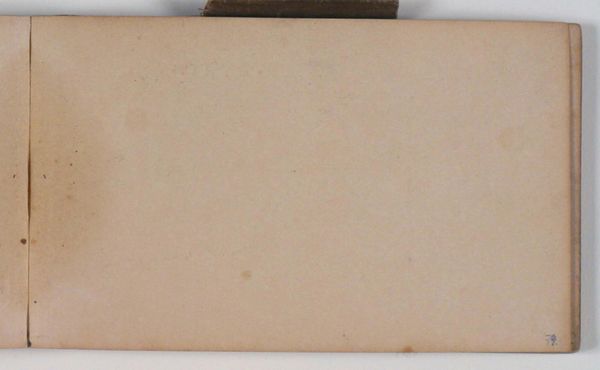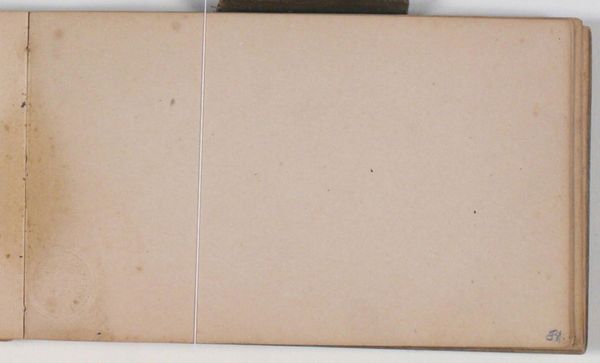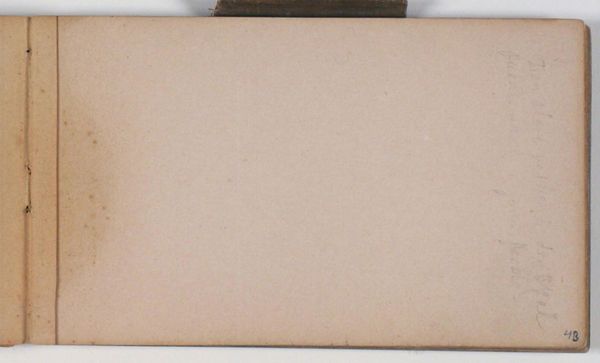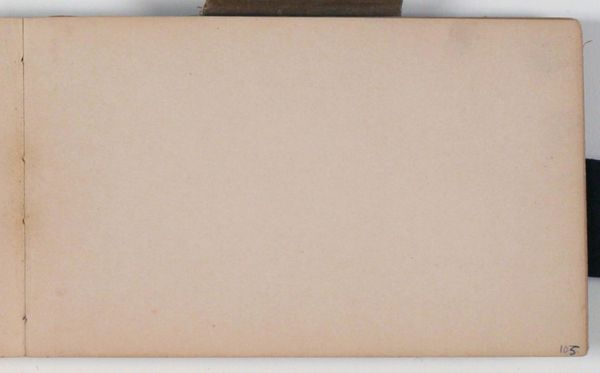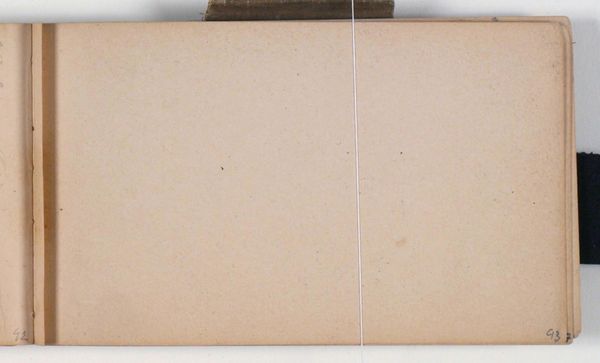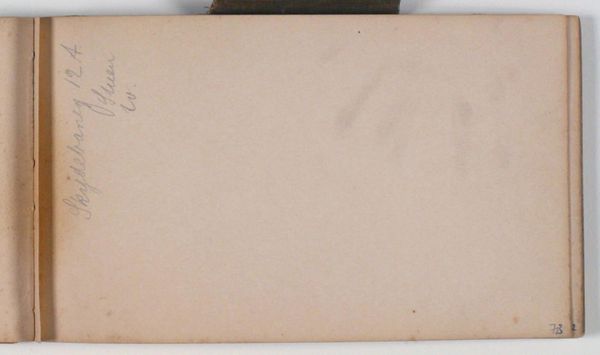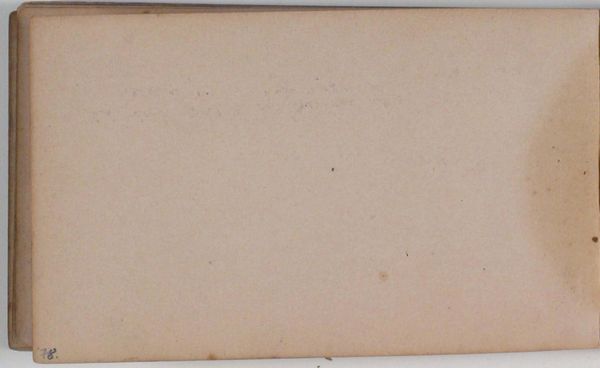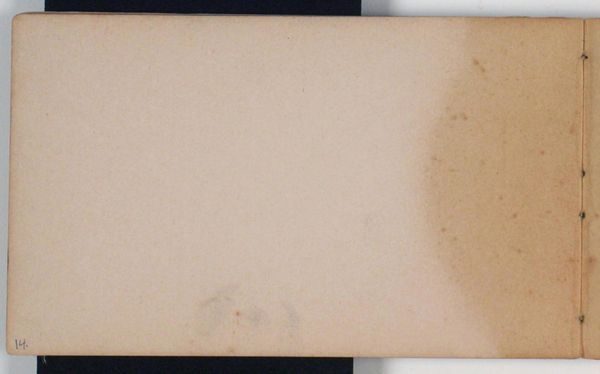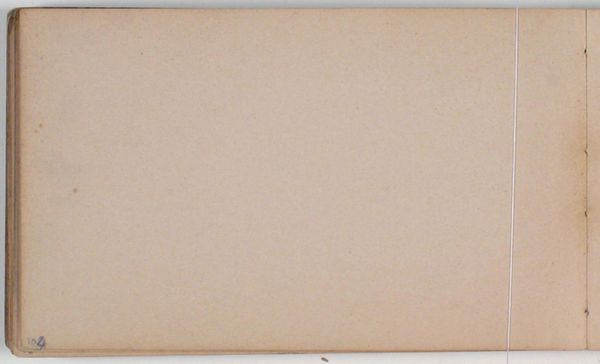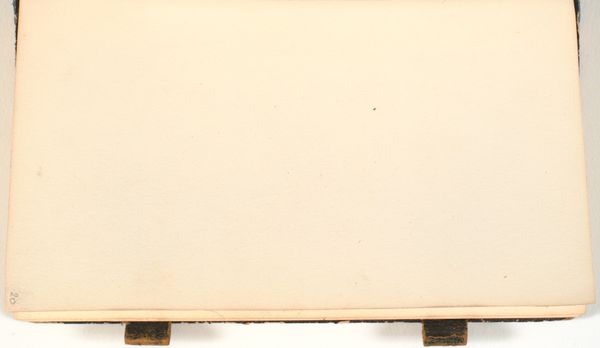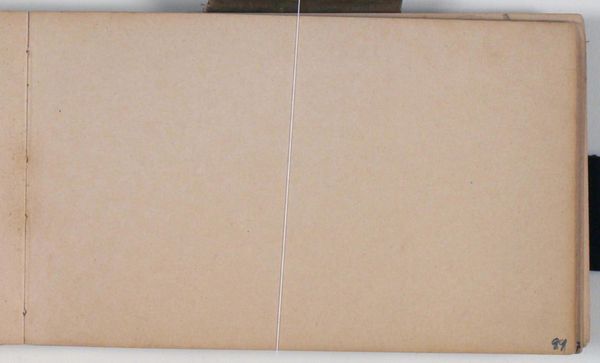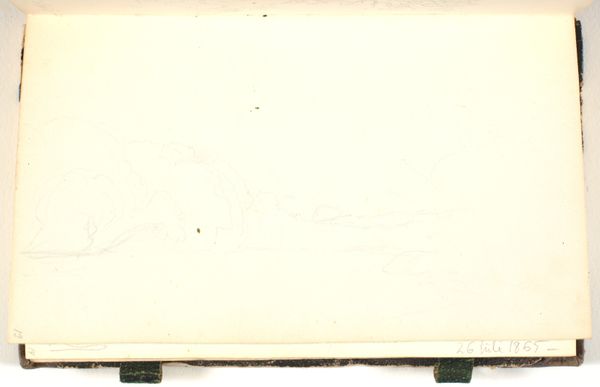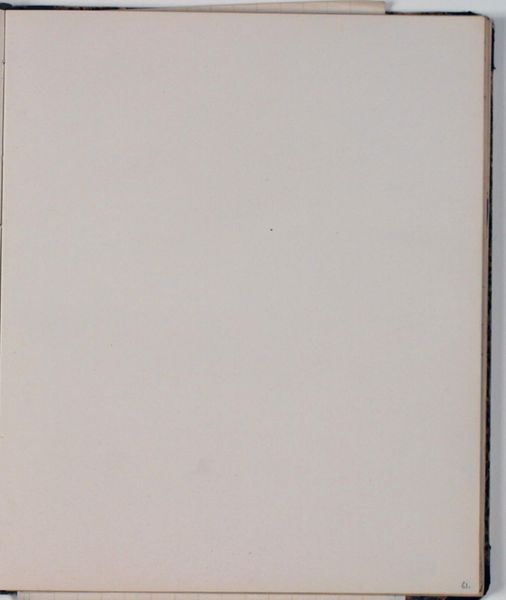
drawing, coloured-pencil, paper, pencil, pastel
#
drawing
#
coloured-pencil
#
paper
#
coloured pencil
#
pencil
#
pastel
#
monochrome
Dimensions: 101 mm (height) x 168 mm (width) (bladmaal)
Curator: We're looking at Niels Larsen Stevns' "Blank" from 1896, currently held at the SMK – Statens Museum for Kunst. It's a drawing composed of coloured pencil, pastel and pencil on paper. Editor: Well, my first impression is quiet contemplation, even serenity. There's a delicate, almost melancholic mood established simply through tone and the subtle surface texture of the paper. Curator: Precisely. Stevns is drawing attention to the fundamental structure. The layering of these mediums – pencil, pastel, and colored pencil – yields an object whose presence arises precisely from what appears, superficially, to be an absence. It forces a consideration of drawing in its barest form, divorced from the obligation to depict anything at all. Editor: That very deliberate act of…non-creation begs questions. Was paper a precious commodity? Were these materials readily accessible? Was the decision an act of… defiance within the traditional art world? Perhaps the art is in the choice, in highlighting labor and material. Curator: A potent challenge to any notion of objective representation. The "blankness," if you will, calls our attention back to the physical artwork and the processes inherent in creating the support—preparing the paper, the means of sketching itself. Editor: I notice the paper appears aged. Its production then wasn't the sleek, automated affair of today, but one dependent on handcrafting—the pulping, the pressing. Imperfections like discoloration might not be defects but reminders of the hands that made it. And that stamp on the corner, is that a watermark perhaps? It reveals yet another layer of labor, purpose and meaning to the paper, its place in the marketplace of ideas. Curator: Absolutely. Even those seemingly insignificant discolorations can become crucial signifying details. Stevns compels us to reconsider those elements, to look past representational tropes to confront materiality as the core artistic concern. It really functions as an early exercise in anti-representation. Editor: An early interrogation into what we value in the making and reception of art objects! What it communicates about Stevns’ view, about paper itself, about labor…that remains profoundly compelling. Curator: It certainly gives us pause to reconsider where, how, and why we look when we seek to derive meaning from artworks. Editor: A rather subversive way, wouldn’t you agree, to invite us to engage with those essential components of art, making its creation visible rather than transparent.
Comments
No comments
Be the first to comment and join the conversation on the ultimate creative platform.
